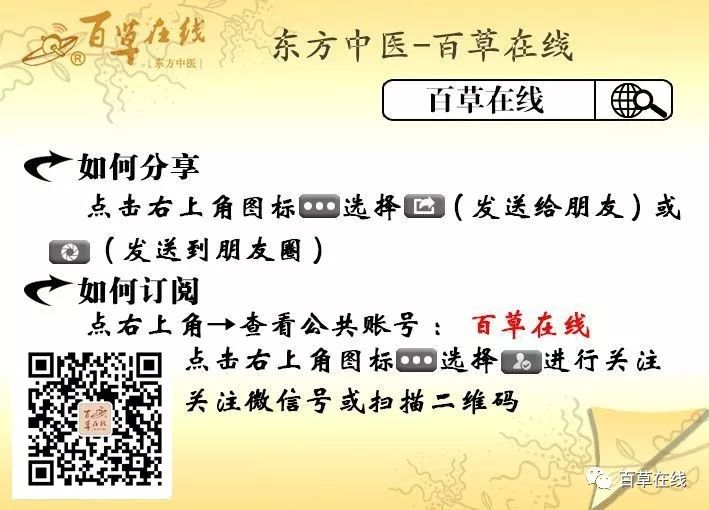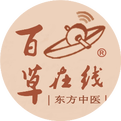Interpretation of the Huangdi Neijing (Fifty-One)
The Theory of Meridians
The term “meridians” refers to the collective name for the jingmai (经脉, meridians) and luomai (络脉, collaterals). Jingmai are the main pathways of the meridian system, while luomai are the branches. The meridians function to circulate qi and blood throughout the body, connect the zang-fu organs and limbs, and communicate internally and externally, thereby linking all parts of the human body into an organic whole. The theory of meridians studies the physiological functions, pathological changes, and the interrelationships between the meridian system and the zang-fu organs. This theory is integral to various aspects of TCM, including physiology, pathology, diagnosis, and treatment, and serves as a guiding principle in clinical practice, particularly in acupuncture, massage, tui na, and qigong.
The Huangdi Neijing discusses the theory of meridians in great detail, occupying a significant position within its theoretical framework. From a structural perspective, the theory of meridians mainly includes two parts: jingmai and luomai. Jingmai are divided into two categories: the regular meridians (正经, zhengjing) and the extraordinary meridians (奇经, qijing). The regular meridians consist of the three yin meridians of the hand (手三阴经, shou san yin jing), the three yin meridians of the foot (足三阴经, zu san yin jing), the three yang meridians of the hand (手三阳经, shou san yang jing), and the three yang meridians of the foot (足三阳经, zu san yang jing), collectively known as the “twelve meridians” (十二经脉, shi er jing mai). The extraordinary meridians include the Chong (冲, chong), Ren (任, ren), Du (督, du), Dai (带, dai), Yin Qiao (阴蹻, yin qiao), Yang Qiao (阳蹻, yang qiao), Yin Wei (阴维, yin wei), and Yang Wei (阳维, yang wei), collectively referred to as the “eight extraordinary meridians” (奇经八脉, qi jing ba mai). Luomai can be further categorized into bie luo (别络, branch collaterals), fu luo (浮络, superficial collaterals), and sun luo (孙络, smallest branch collaterals). There are a total of fifteen bie luo, which serve to enhance the connection and regulatory function between the yin and yang meridians. Fu luo are the collaterals that run superficially. Sun luo are the finest branches of the collaterals.
Additionally, there are the twelve jing bie (十二经别, twelve branch meridians), twelve jing jin (十二经筋, twelve muscle meridians), and twelve pi bu (十二皮部, twelve skin areas). The twelve jing bie are the primary meridians that branch from the twelve meridians, enhancing the connection between the interior and exterior meridians and reaching certain organs and surface areas that the primary meridians do not cover. The twelve jing jin refer to the totality of the muscle system distributed along the pathways of the twelve meridians, serving to connect the body and maintain joint movement. The twelve pi bu are the reflex zones on the skin corresponding to the meridians. Due to the extensive discussion of the theory of meridians in the Huangdi Neijing, this chapter will only excerpt the concepts, functions, and pathways of the twelve regular meridians and the eight extraordinary meridians.
1. The Concept and Function of Meridians
(1) The Difference Between Jingmai and Luomai
1. Jingmai are the main pathways, while the branches that run horizontally are luomai; the smallest branches are sun luo. (From the “Lingshu: Pulse Measurement”)
【Explanation】This section discusses the concepts, anatomical characteristics, and main differences between jing and luo.
“Jing” originally means vertical threads, indicating a straight pathway. “Luo” implies a network. In terms of distribution, jing runs straight as the main trunk, while luo spreads out like a network. Jingmai are the main flow, while luomai are the tributaries. As Zhang Jiebin noted: “Jing is like the rivers of the land, while luo is like the myriad streams of the plains.” This illustrates both the distinction and the inseparable relationship between jing and luo. Jing and luo interconnect, forming an endless loop. Luomai can communicate between the interior and exterior meridians, distributing across the front, back, and sides of the body, supplementing the deficiencies in the pathways of the jingmai. Sun luo are the fine branches of the luomai, running superficially.
2. The twelve jingmai run deep between the muscles, hidden and unseen (1); the commonly visible ones are the hand taiyin meridian above the outer ankle, which is not hidden (2). All the visible and superficial meridians are luomai (3). (From the “Lingshu: Meridians”)
【Explanation】This section further discusses the differences between jing and luo based on their depth of distribution.
(1) “Between the muscles” refers to the muscle tissue. The outer layer is white muscle, while the inner layer is red muscle; thus, they are named “between the muscles”. Jingmai are the main pathways, running deep within the muscles, and are generally not visible or palpable.
(2) “Hand taiyin” was originally written as “foot taiyin”. Zhang Jingyue noted: “Foot taiyin should be written as hand taiyin. The jingmai run deep and straight, thus the twelve jingmai are all hidden between the muscles and cannot be seen. The only visible one is the hand taiyin, which runs above the outer ankle of the hand, where the skin is thin and the muscle is shallow, hence it is not hidden.” Although all twelve jingmai run deep within the muscles, some meridians can be seen at certain points due to thinner skin, allowing for visibility and palpation of the pulse. For example, the hand taiyin, when it runs along the outer side of the wrist, is visible due to the thin skin and shallow muscle.
(3) Except for a few that can be seen at certain points, the jingmai are generally hidden deep within the muscles, while all that is visible and superficial are luomai. In summary, the main difference between jingmai and luomai in terms of distribution is that luo run horizontally while jing run vertically, and luo are superficial while jing are deep.
【Clinical Significance】Understanding the differences between jingmai and luomai is significant for recognizing the transmission patterns of diseases and the characteristics of pathogenesis. Jing are the main pathways, while luo imply a network, spreading throughout the body. Sun luo are superficial, luomai are in the middle, and jingmai are deep. Therefore, when external pathogens invade the body, they first harm the skin, then enter the sun luo, followed by the luomai, and finally the jingmai, sequentially transitioning from exterior to interior and from superficial to deep. As stated in the “Suwen: Regulation of the Meridians”: “When wind and rain harm a person, they first invade the skin, then enter the sun mai, and when the sun mai is full, they enter the luomai; when the luomai is full, they flow into the jingmai.” Later physicians, such as Yu Chang, proposed the theory that external pathogens enter the jingmai from the luomai, while internal injuries arise from the jingmai, illustrating the inter-transmission of jing and luo. As stated in the “Medical Laws”: “There are twelve jing, and there are also twelve luo. Luo refers to the concept of encircling, which is the outer city of the twelve jing. Additionally, there are the large luo of the stomach, the large luo of the spleen, and the large luo of the extraordinary meridians, which are the main pathways for the entry and exit of qi. Therefore, it is also said that there are fifteen luo. The twelve jing give rise to twelve luo, which in turn give rise to one hundred eighty xi luo (系络, connecting collaterals), which further give rise to one hundred eighty chan luo (缠络, entangled collaterals), and finally to thirty-four thousand sun luo. The more they branch out from the interior, the smaller they become; the larger ones are found between the muscles of the yu points, governed by the ying qi (营气, nutritive qi), while the outer layer emerges from the skin and is governed by the wei qi (卫气, defensive qi). Therefore, external pathogens enter through the wei and do not immediately enter the ying, as they are entangled by the luomai. When the luo is filled with pathogens, they enter the ying. Hence, it is said that when the luo is full, it enters the jing, as the ying flows within the jingmai. However, external pathogens, being formless and easily entering, cannot be blocked by the luomai, and when they are abundant, they enter the jing. If the ying qi arises from within, various diseases manifest as blood, qi, phlegm, or accumulation, which cannot escape from the luo. Thus, when the jing is full, it enters the luo, and when the luo is full, it returns to the jing, creating a continuous cycle.
Jing are the main pathways, thus they circulate qi and blood, nourish the zang-fu organs, and maintain the vital essence of life; luo are the tributaries, distributed among the jingmai, nourishing the skin, muscles, and bones. Therefore, if the luomai are obstructed by pathogenic qi, the body will lose nourishment, leading to conditions such as weakness or even stroke. If the jingmai are obstructed by pathogenic qi, qi and blood will be blocked, leading to conditions such as bi syndrome or even death due to the failure of vital energy. As stated in the “Medical Treatise”, Yu Fushan commented: “The human body has jing, luo, and sun luo; qi and blood flow from the spleen and stomach into the sun luo, then into the large luo, and finally into the twelve jing. This is analogous to water flowing from a ditch into a stream, and from the stream into a river. The ditches and streams may overflow or dry up, but the rivers remain constant throughout history. If they dry up, both people and things will perish. In cases of stroke, one side may be numb without pain or itch, and the person does not die because the sun luo and large luo are obstructed by pathogenic qi, preventing the circulation of blood and qi. However, the vital energy within the twelve jing continues to flow, which is why they do not die immediately.” Similarly, Ye Tianshi stated: “Generally, if the pathogen is within the jing, it causes bi syndrome; if it is within the luo, it causes weakness.”
Pan Liang Bao——Online Guidance
Institute of Information Technology in Traditional Chinese Medicine, Zhejiang Province


